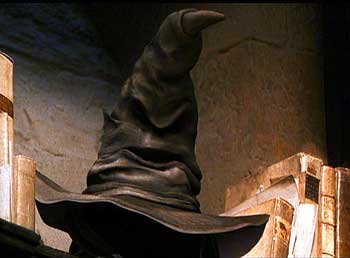
In Good to Great, Jim Collins vividly describes a crucial leadership activity as “getting the right people on the bus, the wrong people off the bus, and the right people in the right seats.” This is probably as true as it is difficult. Whether we’re trying to figure out which bus to get on ourselves or choosing who should ride with us, both our intuition and our research-based systems frequently fail us. Would this mix of values and aspirations better fit this career path or that one? Which skill set is must-have and which is nice-to-have for various roles? It can seem like a crap-shoot at times. Someone who looks perfect on paper may not gel with your existing team, while the person making a career change may do admirably. When we achieve good fit between person, job, and organization, we see greater performance and retention, not to mention a better subjective employee experience. On the flip side, poor hires cost money, time, and, often, bad feelings. Wouldn’t it be nice if instead of the complicated process of resume-writing, networking, recruiting, interviewing, and assessing, we just had a sorting hat? Sadly, us muggles are left trying to figure it out the hard way.

It’s hard to figure out, in part, because we often aren’t honest about who we are and what we are after in the fitting process. Company X emphasizes its fun, collegial culture in all of its recruiting materials, but Joe New-Hire realizes that means they offer a circus-like atmosphere and cheap perks to distract people while they pull all-nighters at the office. Potential Hire Helen overstates the extent to which her past experience prepares her for the new role, and she’s likely to sink rather than swim without intensive coaching. It’s like going to the tailor and misleading them into believing your legs are an inch longer than they actually are. Naturally you’re pants aren’t going to fit! We’re steeped in the belief that putting your best face forward is wiser than risking transparency. To some extent this best-face effect is unconscious. The human mind demonstrates a clear bias toward optimism. We think we are better than we are at most things, we have unruly confidence in our own choices, and we assume that our future will always be bright.
Determining goodness-of-fit is also complicated by the fact most of us, most of the time, are merely splashing in the shallow end when it comes to self-awareness. One of the most powerful tendencies of the mind is its craving for consistency, as renowned psychologist Daniel Kahenman elaborates on in his book Thinking, Fast and Slow. Our minds desperately want our world to be consistent and seemingly solid, even concerning our own and others’ identity. When it comes to pigeon-holing, we can be our own worst offenders, as we discussed in the last post. The reality is that people are a mixed bag of shifting, seemingly contradictory attributes which can surface differently in unexpected ways. This can feel overwhelming to the poor brain, which wants nothing more than to efficiently guide us through the vast and teeming sea of sensory stimuli and data we call life. So, it distills and simplifies, which is handy but impairs our ability to accurately predict how we and others will fare in different contexts. Being able to see ourselves as something other than the caricatures our egos present helps us appreciate that our behavioral responses are more complex and varied than we often assume.
F. Scott Fitzgerald wrote, “The test of a first-rate intelligence is the ability to hold two opposed ideas in mind at the same time and still retain the ability to function.” When we have a more expansive sense of self, we also benefit from access to broader set of abilities and interests. For example, research on psychological androgyny shows that people who are simultaneously aggressive and nurturant, or both dominant and submissive, or both sensitive and rigid, tend to be more creative. “A psychologically androgynous person in effect doubles his or her repertoire of responses and can interact with the world in terms of a much richer and varied spectrum of opportunities.” In this TEDTalk, Emilie Wapnick discusses the idea that “multipotentialites,” capable of developing passionate interest and deep expertise in quite disparate areas, are better at idea synthesis and innovation, rapid learning, and adaptability – exactly the skills needed in today’s business environment.
Back to the idea of fit and seats on the bus. If you followed me down this rabbit hole this far, maybe you agree that self-awareness is the guide that can lead us safely through the thorny thicket of fit. By developing insight into the faculties of the mind, we can overcome its biases and expand our sense of self. It means there can be more than one bus for each of us, and that different people can fit quite comfortably in several seats.
